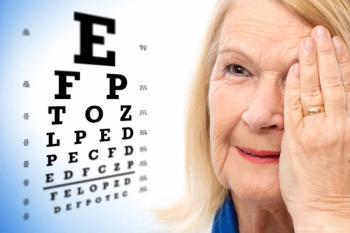
Treating ROP: Substantial benefits make anti-VEGF preferred for Zone I disease
Anti-VEGF therapy for Zone I retinopathy of prematurity (ROP) is associated with better structural and functional outcomes than laser therapy, but also a longer recurrence risk period, said Helen A. Mintz-Hittner, MD.
Reviewed by Helen Mintz-Hittner, MD
Anti-VEGF therapy for Zone I retinopathy of prematurity (ROP) is associated with better structural and functional outcomes than laser therapy, but also a longer recurrence risk period, said Helen A. Mintz-Hittner, MD.
Read the other side of the debate:
“The risk for recurrence after anti-VEGF therapy persists until 60 to 70 weeks adjusted age,” said Dr. Mintz-Hittner. “The long, tedious monitoring for recurrence may be daunting for some people and lead them to question whether the benefits of better visual field and acuity with anti-VEGF therapy are worth the burden of this prolonged intensive observation.”
Anti-VEGF benefits
Follow-up of babies treated with bevacizumab (Avastin, Genentech) for ROP show that the optical components and macula take on the characteristics of a full-term child. In contrast, eyes of laser-treated babies retain the features of a preterm child, Dr. Mintz-Hittner said.
Comparison of anterior segments and optical coherence tomography (OCT) in eyes treated with bevacizumab (A) compared with laser (B). Dashed arrow indicates site of (A) bevacizumab intravitreal injection. Solid arrows indicate characteristics of (B) laser anterior segments: (1) steeper corneas; (2) shallower anterior chambers; and (3) thicker lenses. Note: Axial length in both eyes are identical. Macular differences in OCTs are shown at right of treated eyes. Courtesy of Helen Mitz-Hittner, MD
Dr. Mintz-Hittner is the Alfred W. Lasher III Professor of Ophthalmology and Visual Science, John P. and Kathrine G. McGovern Medical School, University of Texas Health Science Center, Houston.
“Eyes treated with anti-VEGF therapy have continued development of the anterior chamber, and compared with their laser-treated counterparts, have a flatter cornea, deeper anterior chamber, and thinner lens,” Dr. Mintz-Hittner explained. “Therefore, children treated with anti-VEGF for ROP have less high myopia and a decreased risk of angle-closure glaucoma.”
In addition, the peripheral retina remains intact and retinal vascular development continues following anti-VEGF therapy, which results in an increased peripheral visual field. Foveal and macula development continues as well, so children treated with anti-VEGF therapy have better visual acuity.
Anti-VEGF risks
The potential for recurrence over the short term is the significant risk of anti-VEGF therapy. The risk for recurrence, however, is relatively low (~8%), and follow-up and prompt intervention are facilitated by understanding of risk factors, the risk period, and features of developing recurrence.
Most cases of recurrence occur between 45 and 55 weeks adjusted age, although the risk persists to up to 70 weeks adjusted age. Risk factors for recurrence include appearance of neovascularization as aggressive posterior ROP (APROP), prolonged hospitalization, and low birthweight.
Small extent and a slow advancement of retinal vascularization may be a clue to impending recurrence. Then, plus disease returns followed by reappearance of extraretinal fibroblastic proliferation (EFP).
Sites of recurrence also have been identified based on retrospective review of 471 eyes of 241 infants followed for at least 65 weeks adjusted age after intravitreal bevacizumab for type 1 ROP in zone I or zone II posterior [Ophthalmology. 2016;123(9):1845-1855].
Analysis of Stage 3 ROP
According to the analyses, recurrence in an eye treated initially for Stage 3 ROP with moderate-to-severe EFP occurs at the former site of EFP and at the advancing edge of retinal vascularization. In a child initially treated for APROP or stage 3 ROP with minimal EFP, recurrence will be observed only at the advancing edge of retinal vascularization, Dr. Mintz-Hittner said.
In addition to the short-term risk of recurrence, other risks accompanying anti-VEGF therapy include injection-related adverse events, including trauma to the lens or retina and endophthalmitis.
Long-term risks relate to the potential for effects on the kidneys, central nervous system development, and liver resulting from systemic VEGF suppression.
“The systemic safety concerns remain unproven,” Dr. Mintz-Hittner said. “So far, we only have 9 to 10 years of experience with anti-VEGF therapy for ROP. We need more information from more patients and with longer follow-up to understand the long-term risks.”
Helen Mintz-Hittner, MD
E: helen.a.mintz-hittner@uth.tmc.edu
This article is based on a presentation given by Dr. Mintz-Hittner at the 2016 Pediatric Subspecialty Day meeting prior to the 2016 American Academy of Ophthalmology meeting. She has no relevant financial interests to disclose.
Newsletter
Keep your retina practice on the forefront—subscribe for expert analysis and emerging trends in retinal disease management.













































